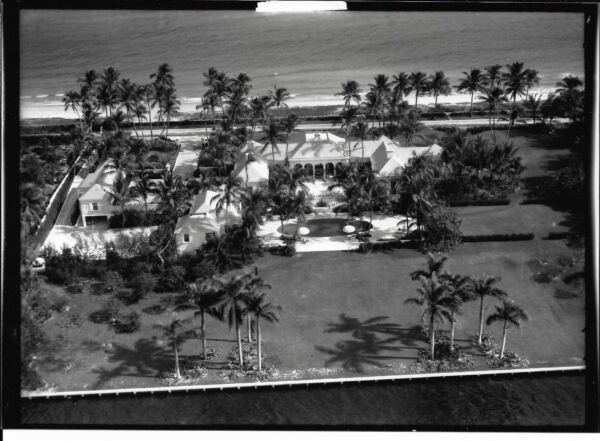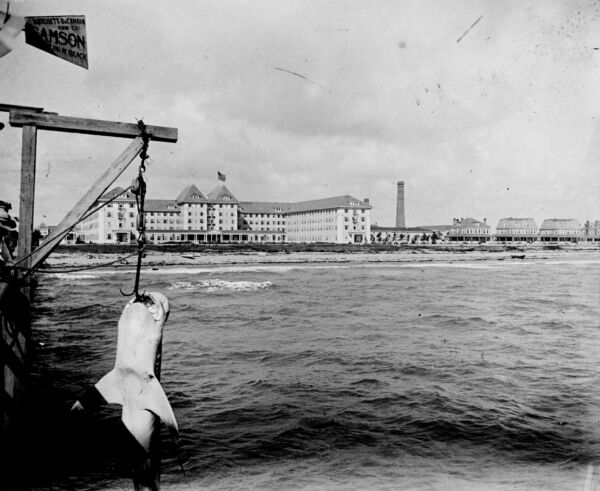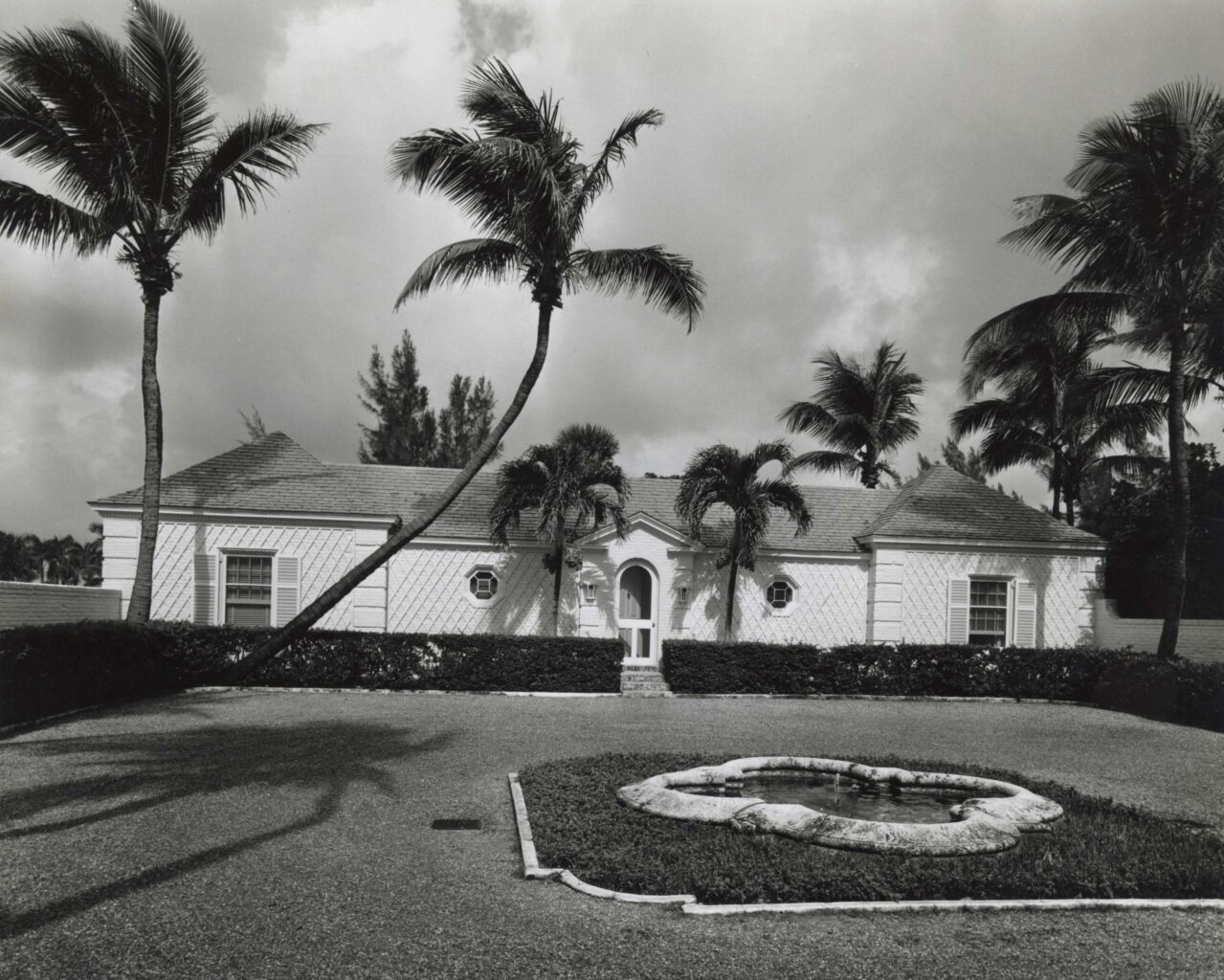After the Coe’s sold their Yemassee, South Carolina home, they needed a new winter residence – one that was more accessible in terms of travel and livability. They purchased their Palm Beach home in January 1955. Aside from their New York City residences, this was the only time that they did not commission the design of a new building. It was an existing one-story house located on “Billionaire’s Row”, originally designed for developer Albert R. Worsick by Treanor & Fatio in 1937. Prior to their purchase, the house was leased by socialites like the Duke and Duchess of Windsor.

View of the courtyard and pool looking toward the ocean, courtesy of the Preservation Foundation of Palm Beach.
Treanor & Fatio maintained New York and Palm Beach offices and were known for designing country houses on the North Shore such as Oldfields for George Backer, which today serves as the clubhouse for the Pine Hollow Country Club in East Norwich. Before partnering with William Treanor, Maurice Fatio worked for Harrie Lindeberg in New York City, whose country house designs proliferated on Long Island and across the United States.
The style is considered Bermudian (though it’s been referred to as Georgian), with its steep pitched roofs, quoins, and ample shutters. Bermuda-style architecture draws from English colonial influence adapted for tropical climate – it utilizes light reflecting colors and courtyards to minimize heat. Compared to the grand Mediterranean Revival estates, popularized by architect Addison Mizner, this house is relatively simple and is indicative of low-lying rambling estates built after the Great Depression in Palm Beach.
Like many others in their social set, the Coe’s vacationed in Palm Beach before acquiring real estate. They often were guests of other couples, for instance in 1943 W.R. wrote Natalie that, “We went to Palm Beach and spent ten days with the Smithers. The weather was delightful and I had sea bathing every day.” The following year they stayed with Mr. and Mrs. Howard Brokaw at their Middle Road residence.

This image from the Coe’s stereo-slide collection depicts an early version (or the second iteration) of The Breakers Hotel in Palm Beach, circa 1910. Image courtesy of Planting Fields Foundation Archives.
W.R. Coe was only able to enjoy the Palm Beach house for one season. After he died in May of 1955, Caroline continued to spend time there, however, sporadically due to her declining health and the building of the Manor House at Planting Fields. Anne Lanfranchi of the eponymous Lanfranchi served as interior decorator. The Worth Avenue firm specialized in antiques, interiors, and wrought iron. Lanfranchi often communicated with Dorothy Dear Hutton, who was a close friend of Caroline’s and a Palm Beach resident on decoration decisions.

Interior of sitting room, circa 1965. Image courtesy of Planting Fields Foundation Archives.
As early as 1956, real estate agents began to contact the Coe Foundation, eager to sell the house. Although Caroline could not travel frequently, she was hesitant to relinquish the property. It was even rumored that Marjorie Merriweather Post (at the time married to Herbert May) was interested in the house. Two years after Caroline’s death, in 1962, the house sold for $500,000 (over $5 million in 2025) to Mr. and Mrs. Irving Gelders and in 1971 it was purchased by Willis DuPont. It was designated as a landmark in 1990 and continues to be privately owned.
From Michael D. Coe Archivist, Marie Penny.
Header image: Entrance court wing of house, circa 1965. Image courtesy of Planting Fields Foundation Archives.


Again, so interesting & wonderful old photos. It is nice to know it is still there.
Again, so interesting & wonderful old photos. It is nice to know it is still there.